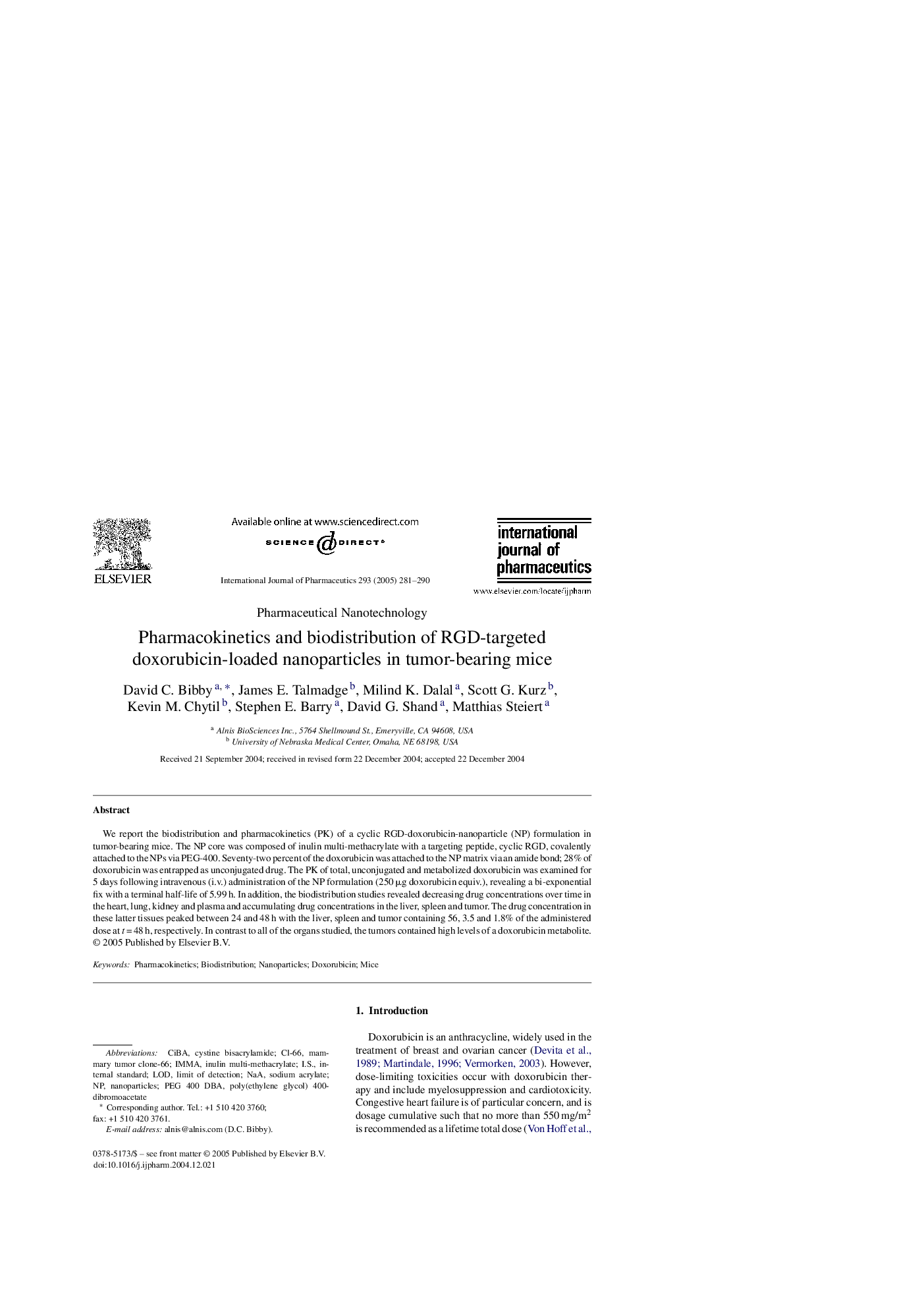| Article ID | Journal | Published Year | Pages | File Type |
|---|---|---|---|---|
| 9918892 | International Journal of Pharmaceutics | 2005 | 10 Pages |
Abstract
We report the biodistribution and pharmacokinetics (PK) of a cyclic RGD-doxorubicin-nanoparticle (NP) formulation in tumor-bearing mice. The NP core was composed of inulin multi-methacrylate with a targeting peptide, cyclic RGD, covalently attached to the NPs via PEG-400. Seventy-two percent of the doxorubicin was attached to the NP matrix via an amide bond; 28% of doxorubicin was entrapped as unconjugated drug. The PK of total, unconjugated and metabolized doxorubicin was examined for 5 days following intravenous (i.v.) administration of the NP formulation (250 μg doxorubicin equiv.), revealing a bi-exponential fix with a terminal half-life of 5.99 h. In addition, the biodistribution studies revealed decreasing drug concentrations over time in the heart, lung, kidney and plasma and accumulating drug concentrations in the liver, spleen and tumor. The drug concentration in these latter tissues peaked between 24 and 48 h with the liver, spleen and tumor containing 56, 3.5 and 1.8% of the administered dose at t = 48 h, respectively. In contrast to all of the organs studied, the tumors contained high levels of a doxorubicin metabolite.
Keywords
Related Topics
Health Sciences
Pharmacology, Toxicology and Pharmaceutical Science
Pharmaceutical Science
Authors
David C. Bibby, James E. Talmadge, Milind K. Dalal, Scott G. Kurz, Kevin M. Chytil, Stephen E. Barry, David G. Shand, Matthias Steiert,
